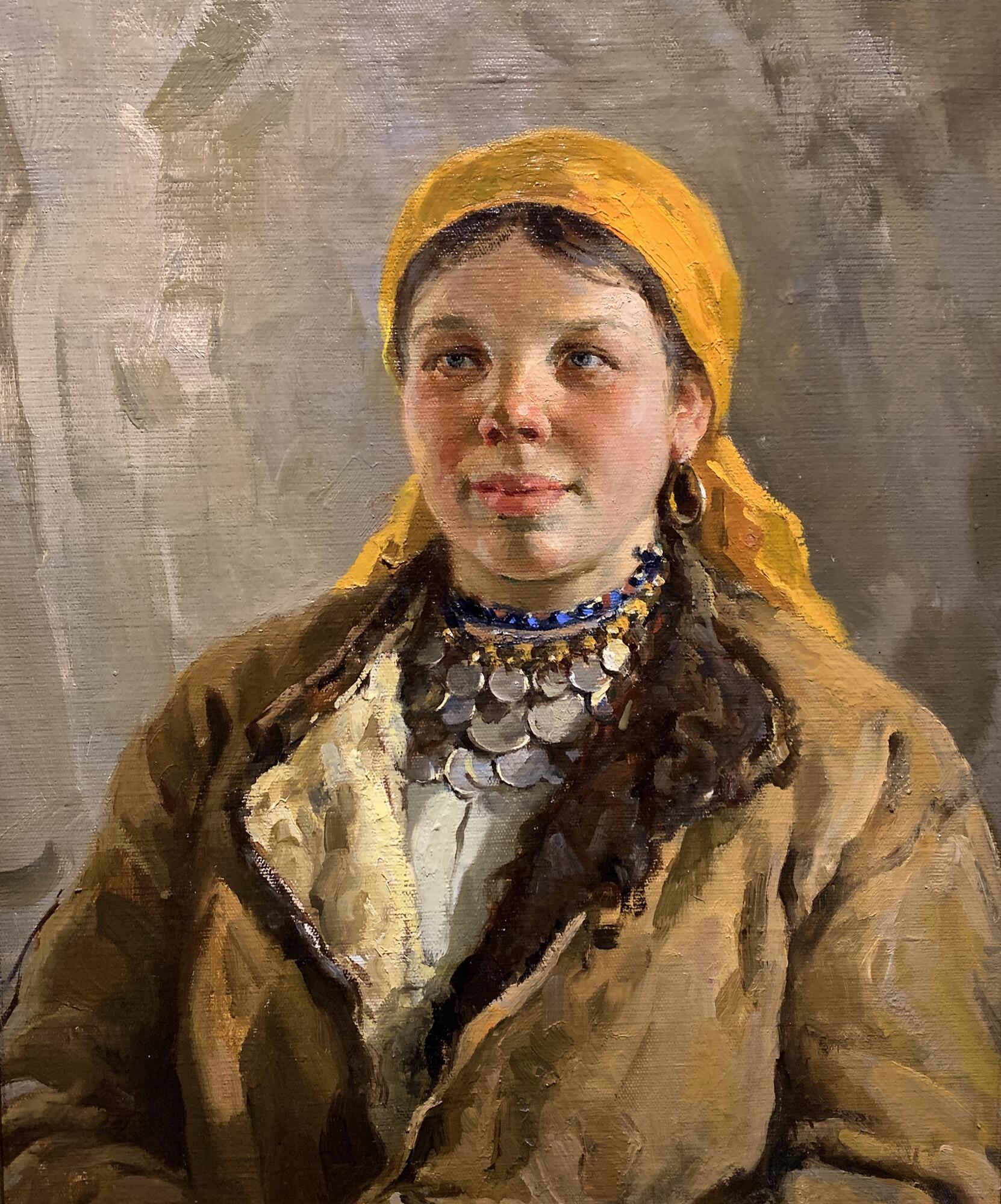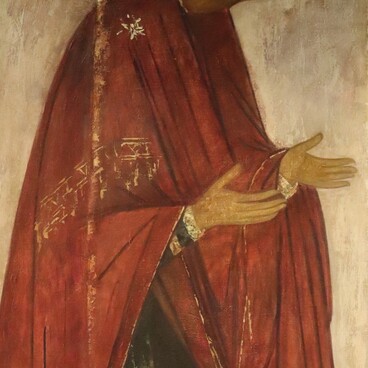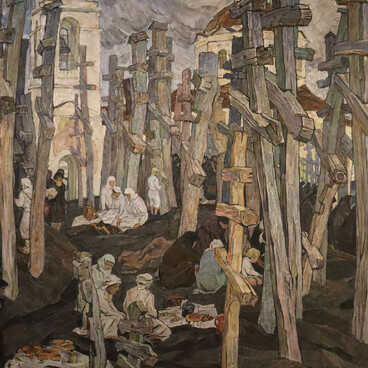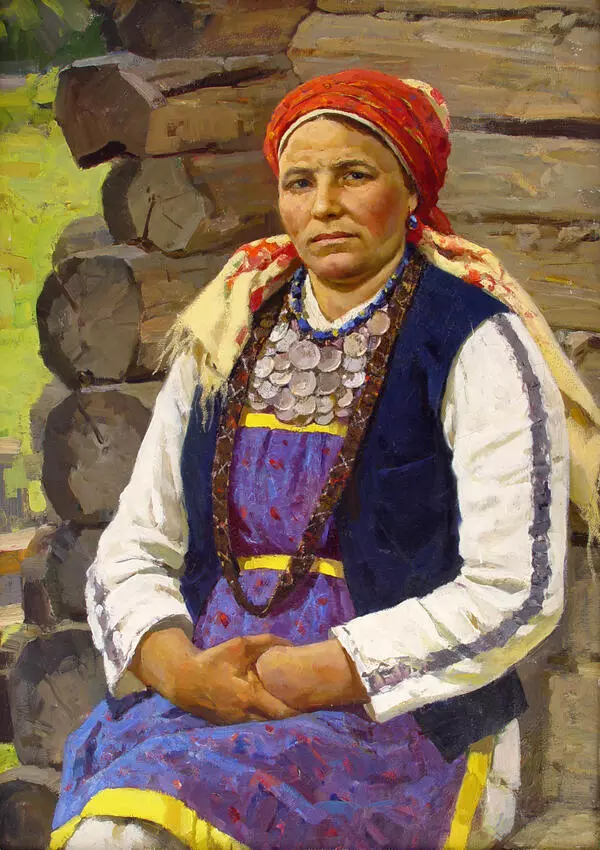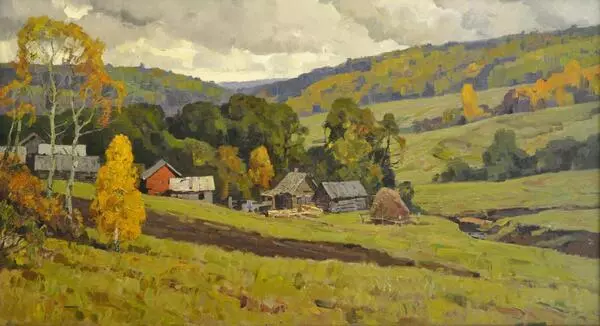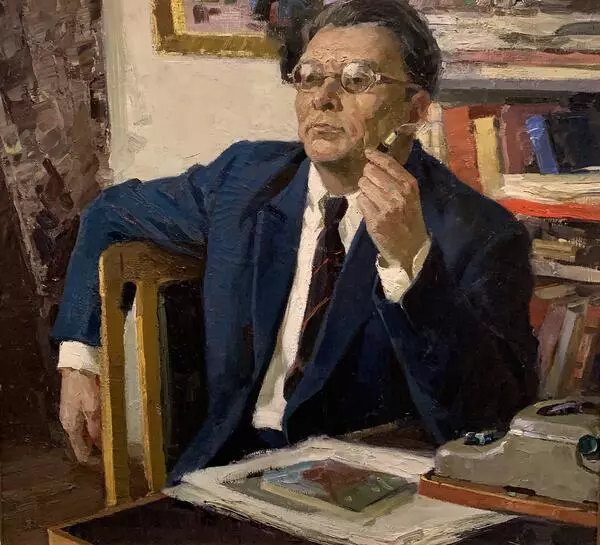The Soviet painter Vladimir Ilyukhin (1923–2007) for a long time served as the chairman of the Artists’ Union of Mordovia. The most complete collection of his works is housed in the Mordovian Republican Museum of Visual Arts named after Stepan Dmitrievich Erzia, and some of his paintings are housed in major museums in Russia and private collections. His 1952 large-scale canvas “Meeting of A.V. Suvorov and F.F. Ushakov in Sevastopol” brought him fame and recognition.
Vladimir Ilyukhin particularly loved working with a special type of portrait that focuses on an in-depth psychological characterization of the model. Such a portrait is distinguished by an intensely sharp and accurate rendering of the sitter’s appearance and at the same time by a portrayal of their heroic spirit and an image full of humanism.
In the portrait characteristic of Vladimir Ilyukhin’s style, real and idealized notions about the sitter’s personality are combined. On the one hand, a bright, individual character emerges in the image of the sitter. On the other hand, the artist makes a broader generalization based on the moral ideal.
Such paintings by the artist as “Collective Farm Groom”, “Portrait of the Mordovian Poet Nikul Erkai” and “Portrait of a Leading Calf Woman from the ‘Red October’ Collective Farm N.A. Kosolapova” are examples of such a portrait. In some works, this generalizing approach prevails and such paintings even border on Symbolism, while others feature a more lyrical and time-specific depiction.
The format of these works varies. It can be a chest-length portrait, as the 1955 painting “Young Milkmaid”. The chest-length image figuratively emphasizes the model’s isolation from the outside world. In half-length and three-quarter-length portraits, the artist looks for a special expressiveness of gestures and individuality of pose.
The portrait of the “Young Milkmaid” can be perceived as an example of the naive and optimistic image of that era. A round-faced and rosy-cheeked girl in a sheepskin coat and a bright scarf personifies the fullness and joy of being. Her face is cheerful and youthful. She wears gold hoop earrings, and on her neck is a bright blue string of beads and a necklace (also called a “monisto”) that glows with the silver of ancient coins.
The pink color is richly represented: from a light, transparent and delicate to thick, saturated and opaque. The neutral brownish-gray background is sculpted with large, wide brush strokes. The combination of bright colors and a muted background creates a unique, lush color palette.
Vladimir Ilyukhin particularly loved working with a special type of portrait that focuses on an in-depth psychological characterization of the model. Such a portrait is distinguished by an intensely sharp and accurate rendering of the sitter’s appearance and at the same time by a portrayal of their heroic spirit and an image full of humanism.
In the portrait characteristic of Vladimir Ilyukhin’s style, real and idealized notions about the sitter’s personality are combined. On the one hand, a bright, individual character emerges in the image of the sitter. On the other hand, the artist makes a broader generalization based on the moral ideal.
Such paintings by the artist as “Collective Farm Groom”, “Portrait of the Mordovian Poet Nikul Erkai” and “Portrait of a Leading Calf Woman from the ‘Red October’ Collective Farm N.A. Kosolapova” are examples of such a portrait. In some works, this generalizing approach prevails and such paintings even border on Symbolism, while others feature a more lyrical and time-specific depiction.
The format of these works varies. It can be a chest-length portrait, as the 1955 painting “Young Milkmaid”. The chest-length image figuratively emphasizes the model’s isolation from the outside world. In half-length and three-quarter-length portraits, the artist looks for a special expressiveness of gestures and individuality of pose.
The portrait of the “Young Milkmaid” can be perceived as an example of the naive and optimistic image of that era. A round-faced and rosy-cheeked girl in a sheepskin coat and a bright scarf personifies the fullness and joy of being. Her face is cheerful and youthful. She wears gold hoop earrings, and on her neck is a bright blue string of beads and a necklace (also called a “monisto”) that glows with the silver of ancient coins.
The pink color is richly represented: from a light, transparent and delicate to thick, saturated and opaque. The neutral brownish-gray background is sculpted with large, wide brush strokes. The combination of bright colors and a muted background creates a unique, lush color palette.
